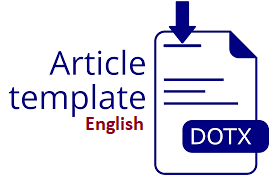Redesign E-learning with User Centered Design Method for Improved Accessibility Students
DOI:
https://doi.org/10.30865/klik.v4i4.1662Keywords:
Human Computer Interaction; E-learning; Software EngineerAbstract
E-learning is learning with information technology in providing material and interaction between teachers and students. In the application of e-learning must have easy access for students and teachers because it will affect teaching and learning activities. However, in the application of e-learning, there are still difficulties felt by students as has been implemented in MTsN 16 Jakarta. Based on questionnaires and interviews conducted at the beginning of the study which was attended by 30 respondents obtained results where the e-learning used had difficulty in finding assignment forms, task deadlines, and discussion forums by obtaining an SUS score of 42.9. In this case, a redesign is needed to solve the problems perceived by the user. This research uses user-centered design (UCD) in design development because UCD focuses on users to meet user needs and can improve the ease of accessing e-learning based on user needs, in addition to the development of redesign e-learning will take references based on users and e-learning that has been used before. The e-learning redesign prototype will be tested using the System Usability Scale (SUS) followed by 61 respondents. From the test results using SUS got a result of 80,82 which is included in the good and acceptable category. This research also shows that redesigning e-learning using UCD can facilitate access and learning activities carried out by students
Downloads
References
A. S. AJIATMOJO, “Penggunaan E-Learning Pada Proses Pembelajaran Daring,” Teach. J. Inov. Kegur. dan Ilmu Pendidik., vol. 1, no. 3, hal. 229–235, 2021, doi: 10.51878/teaching.v1i3.525.
D. Hariyanto, M. B. Triyono, dan T. Köhler, “Usability evaluation of personalized adaptive e-learning system using USE questionnaire,” Knowl. Manag. E-Learning, vol. 12, no. 1, hal. 85–105, 2020, doi: 10.34105/j.kmel.2020.12.005.
T. Huynh, A. Madsen, S. McKagan, dan E. Sayre, “Building personas from phenomenography: a method for user-centered design in education,” Inf. Learn. Sci., vol. 122, no. 11–12, hal. 689–708, 2021, doi: 10.1108/ILS-12-2020-0256.
A. Dinimaharawati, A. I. Wuryandari, dan H. A. Aziiz, “Designing educational games on E-learning SMANAS based learning experience design,” 2018 Int. Semin. Res. Inf. Technol. Intell. Syst. ISRITI, hal. 265–270, 2018, doi: 10.1109/ISRITI.2018.8864470.
M. Rafif, V. Effendy, dan A. Gandhi, “User Interface Design for Blood Donor Information Media Using User-Centered Design Method (Case Study UTD PMI Pontianak),” 2022 1st Int. Conf. Softw. Eng. Inf. Technol. ICoSEIT 2022, hal. 156–161, 2022, doi: 10.1109/ICoSEIT55604.2022.10029978.
M. A. Almaiah dan I. Y. Alyoussef, “Analysis of the Effect of Course Design, Course Content Support, Course Assessment and Instructor Characteristics on the Actual Use of E-Learning System,” IEEE Access, vol. 7, hal. 171907–171922, 2019, doi: 10.1109/ACCESS.2019.2956349.
B. Budhianto, “Analisis perkembangan dan faktor yang mempengaruhi keberhasilan pembelajaran daring (e-learning ),” J. AgriWidya, vol. 1, no. 1, hal. 11–29, 2020.
L. M. Hasani, D. I. Sensuse, Kautsarina, dan R. R. Suryono, “User-Centered Design of e-Learning User Interfaces: A Survey of the Practices,” 2020 3rd Int. Conf. Comput. Informatics Eng. IC2IE 2020, hal. 299–305, 2020, doi: 10.1109/IC2IE50715.2020.9274623.
K. V Vlasenko, I. V Lovianova, S. V Volkov, dan I. V Sitak, “UI / UX design of educational on-line courses,” February, 2022.
G. Senevirathne dan K. Manathunga, “Impact of E-Learning System User Interface Design on User Satisfaction,” IEEE Reg. 10 Humanit. Technol. Conf. R10-HTC, vol. 2021–Septe, hal. 1–6, 2021, doi: 10.1109/R10-HTC53172.2021.9641570.
L. M. Hasani, H. B. Santoso, dan R. Yugo Kartono Isal, “Designing alternative interface design of E-learning modules based on felder-silverman learning styles and user centered design approach,” 2019 Int. Conf. Adv. Comput. Sci. Inf. Syst. ICACSIS 2019, hal. 459–464, 2019, doi: 10.1109/ICACSIS47736.2019.8979717.
A. Krisnoanto, A. H. Brata, dan M. T. Ananta, “Penerapan Metode User Centered Design Pada Aplikasi E-Learning Berbasis Android ( Studi Kasus?: SMAN 3 Sidoarjo ),” J. Pengemb. Teknol. Inf. dan Ilmu Komput. Univ. Brawijaya, vol. 2, no. 12, hal. 6495–6501, 2018.
E. R. Subhiyakto, Y. P. Astuti, dan L. Umaroh, “Perancangan User Interface Aplikasi Pemodelan Perangkat Lunak Menggunakan Metode User Centered Design,” KONSTELASI Konvergensi Teknol. dan Sist. Inf., vol. 1, no. 1, hal. 145–154, 2021, doi: 10.24002/konstelasi.v1i1.4266.
D. P. Kesuma, “Penggunaan Metode System Usability Scale Untuk Mengukur Aspek Usability Pada Media Pembelajaran Daring di Universitas XYZ,” JATISI (Jurnal Tek. Inform. dan Sist. Informasi), vol. 8, no. 3, hal. 1615–1626, 2021, doi: 10.35957/jatisi.v8i3.1356.
A. R. Novianto dan S. Rani, “Pengembangan Desain UI/UX Aplikasi Learning Management System dengan Pendekatan User Centered Design,” J. Sains, Nalar, dan Apl. Teknol. Inf., vol. 2, no. 1, 2022, doi: 10.20885/snati.v2i1.16.
I. M. A. D. Saputra, I. M. A. Pradnyana, dan N. Sugihartini, “Usability Testing Pada Sistem Tracer Study Undiksha Menggunakan Metode Heuristic Evaluation,” J. Pendidik. Teknol. dan Kejuru., vol. 16, no. 1, hal. 98, 2019, doi: 10.23887/jptk-undiksha.v16i1.18171.
D. L. Kaligis dan R. R. Fatri, “Pengembangan Tampilan Antarmuka Aplikasi Survei Berbasis Web Dengan Metode User Centered Design. JUST IT?: Jurnal Sistem Informasi, Teknologi Informasi Dan Komputer, 10(2), 106. https://doi.org/10.24853/justit.10,” JUST IT J. Sist. Informasi, Teknol. Inf. dan Komput., vol. 10, no. 2, hal. 106, 2020.
I. Young, Aligning Design Strategy with Human Behavior. 2008.
R. Zakia, T. Nabarian, dan B. Amalia, “Rancang Bangun Antarmuka berbasis Website Design Method (WDM) untuk Toko Baju Online,” J. Inform. Terpadu, vol. 9, no. 1, hal. 24–33, 2023, doi: 10.54914/jit.v9i1.620.
Z. Sharfina dan H. B. Santoso, “An Indonesian adaptation of the System Usability Scale (SUS),” 2016 Int. Conf. Adv. Comput. Sci. Inf. Syst. ICACSIS 2016, hal. 145–148, 2017, doi: 10.1109/ICACSIS.2016.7872776.
G. W. Sasmito, L. O. M. Zulfiqar, dan M. Nishom, “Usability Testing based on System Usability Scale and Net Promoter Score,” 2019 2nd Int. Semin. Res. Inf. Technol. Intell. Syst. ISRITI 2019, hal. 540–545, 2019, doi: 10.1109/ISRITI48646.2019.9034666.
J. Brooke, “SUS?: A Retrospective,” J. Usability Stud., vol. 8, no. 2, hal. 29–40, 2020.
T. R. Haaksma, M. D. T. De Jong, dan J. Karreman, “Users Personal Conceptions of Usability and User Experience of Electronic and Software Products,” IEEE Trans. Prof. Commun., vol. 61, no. 2, hal. 116–132, 2018, doi: 10.1109/TPC.2018.2795398.
Bila bermanfaat silahkan share artikel ini
Berikan Komentar Anda terhadap artikel Redesign E-learning with User Centered Design Method for Improved Accessibility Students
ARTICLE HISTORY
Issue
Section
Copyright (c) 2024 Harvian Khusnan Hafidz, Indra Lukmana Sardi, Yanuar Firdaus Arie Wibowo

This work is licensed under a Creative Commons Attribution 4.0 International License.
Authors who publish with this journal agree to the following terms:
- Authors retain copyright and grant the journal right of first publication with the work simultaneously licensed under Creative Commons Attribution 4.0 International License that allows others to share the work with an acknowledgment of the work's authorship and initial publication in this journal.
- Authors are able to enter into separate, additional contractual arrangements for the non-exclusive distribution of the journal's published version of the work (e.g., post it to an institutional repository or publish it in a book), with an acknowledgment of its initial publication in this journal.
- Authors are permitted and encouraged to post their work online (e.g., in institutional repositories or on their website) prior to and during the submission process, as it can lead to productive exchanges, as well as earlier and greater citation of published work (Refer to The Effect of Open Access).
















